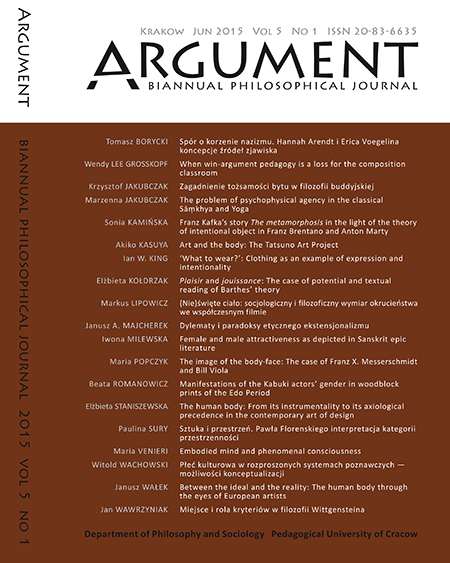The human body: From its instrumentality to its axiological precedence in the contemporary art of design
Keywords:
tool, the handiness of tools, Martin Heidegger, design, beyond practical values, bodily comfort, everyday aestheticsAbstract
Heidegger’s notion of ‘handiness’ combines two meanings, which in my view should be separated. They both refer to ways of characterizing tools in a given culture. Every culture uses tools, and they are all used so they are ‘handy’. The question is: Handy with regard to what? Two answers come to mind. The first one suggests that handiness is typical of the aims achieved in a given culture, which are linked with that culture’s system of values. Having been fulfilled, the aims seem to disappear, but new ones emerge and the cultural values are all the time appreciated. The aims and values constitute a part of the vision of the world accepted by the members of a given cultural community. In such a context, we can understand the handiness of tools as their optimum quality in facilitating the achievement of the aims which maintain the current cultural values, and so the existence of a given culture. The second answer links handiness with fulfilling the requirements of the human body. When considering the body in terms of its biological categories (as an organism) we can bear in mind its universal characteristics such as limbs, height, differences in body measurements, etc. In such a context, Martin Heidegger’s handiness can be understood pragmatically, as the features of a tool when adjusting it to the human body. In this paper, I propose a thesis that contemporary design loses handiness of the first type, while concentrating on making tools more and more comfortable for the human body. The cultural aims and values traditionally recognized in a given culture lose their priority, or seem to be ignored. At the same time, every tool user is given a chance to develop handiness of the first type. Whether we use this opportunity or not is another problem.


